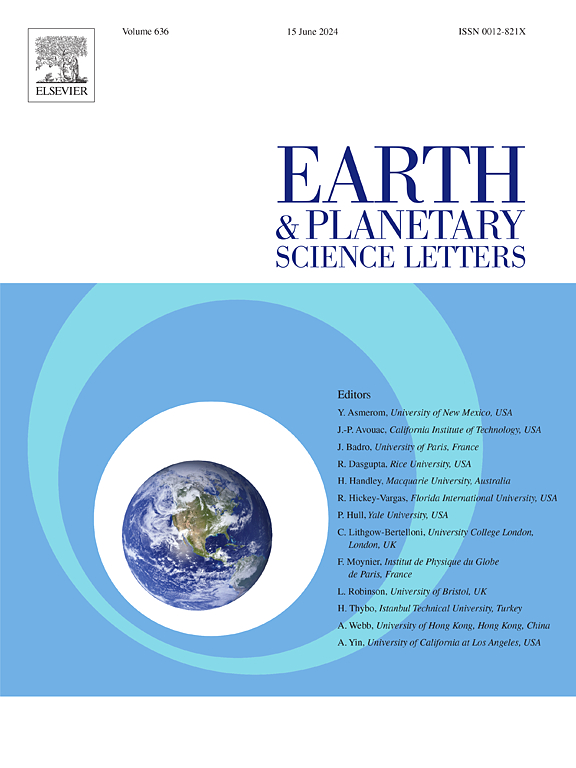High energy electron irradiation promotes the space weathering process on the nearside of the Moon
IF 4.8
1区 地球科学
Q1 GEOCHEMISTRY & GEOPHYSICS
引用次数: 0
Abstract
Space weathering occurs extensively on the surfaces of airless bodies, altering the optical properties of surface materials. Micrometeorite impacts and solar wind ion implantation are considered as two key driving mechanisms of space weathering on the lunar surface, leading to spectral reddening (an increase in spectral slope) and darkening (a reduction in overall reflectance). Their effects have been extensively studied, whereas the role of electron irradiation and its fundamental mechanisms remain less understood. This issue is particularly relevant when the Moon is within Earth’s magnetotail plasma sheet, where the flux of high-energy electron is significantly elevated. Therefore, here we investigate the space weathering effects induced by electron irradiation via simulated experiments. Our results demonstrate that electron irradiation induces significant reddening and darkening in the reflectance spectra of olivine and pyroxene. More importantly, these spectral changes are reduced after thermal annealing. Such spectral alterations are attributed to the formation of color centers during electron irradiation, which is fundamentally different from the production of nanophase iron induced by the bombardments of micrometeorites and solar wind. This provides a potential explanation for the differences in space weathering processes on the near and far sides of the Moon.
高能电子辐射促进了月球近侧的空间风化过程
空间风化广泛发生在无空气物体的表面,改变了表面材料的光学特性。微陨石撞击和太阳风离子注入被认为是月球表面空间风化的两个关键驱动机制,导致光谱变红(光谱斜率增加)和变暗(总反射率降低)。它们的作用已被广泛研究,而电子辐照的作用及其基本机制仍知之甚少。当月球在地球的磁尾等离子体层内时,这个问题尤为重要,在那里高能电子的通量显著提高。因此,本文通过模拟实验研究了电子辐照对空间风化的影响。我们的研究结果表明,电子辐照引起橄榄石和辉石的反射光谱显着变红和变暗。更重要的是,经过热处理后,这些光谱变化被减小了。这种光谱变化归因于电子辐照过程中色心的形成,这与微陨石和太阳风轰击诱导的纳米相铁的产生有着根本的不同。这为月球近端和远端空间风化过程的差异提供了一个潜在的解释。
本文章由计算机程序翻译,如有差异,请以英文原文为准。
求助全文
约1分钟内获得全文
求助全文
来源期刊

Earth and Planetary Science Letters
地学-地球化学与地球物理
CiteScore
10.30
自引率
5.70%
发文量
475
审稿时长
2.8 months
期刊介绍:
Earth and Planetary Science Letters (EPSL) is a leading journal for researchers across the entire Earth and planetary sciences community. It publishes concise, exciting, high-impact articles ("Letters") of broad interest. Its focus is on physical and chemical processes, the evolution and general properties of the Earth and planets - from their deep interiors to their atmospheres. EPSL also includes a Frontiers section, featuring invited high-profile synthesis articles by leading experts on timely topics to bring cutting-edge research to the wider community.
 求助内容:
求助内容: 应助结果提醒方式:
应助结果提醒方式:


